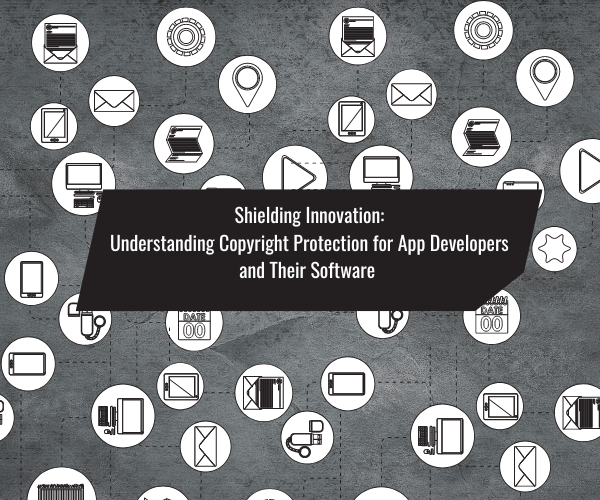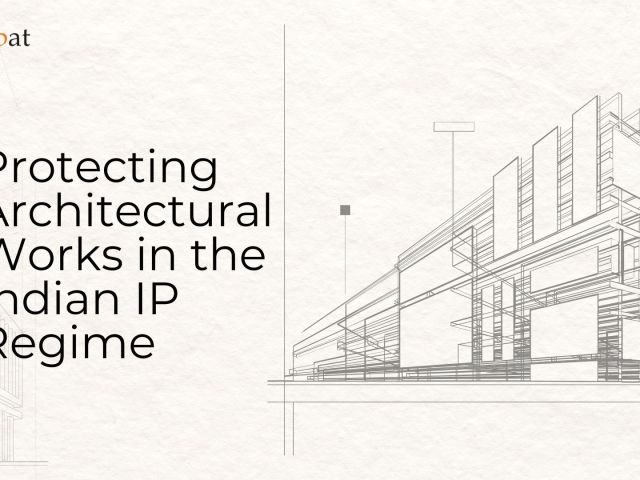Introduction
With the rise of the mobile application industry, India emerges as a highly profitable market, witnessing over twenty-eight billion downloads in 2022, accounting for 5% of the total global downloads. However, this flourishing industry brings forth a multitude of legal challenges, encompassing privacy concerns and intellectual property protection.
In the realm of mobile applications, which enjoy immense popularity, developers find themselves amidst fierce competition. It thus becomes crucial for them to safeguard their creations through effective intellectual property laws. This not only aims to prevent others from infringing their IP rights but also ensures that unauthorized individuals do not profit from their hard work. Hence, the purpose of this blog is to delve into the significance of copyright protection, the limits of protection and the remedies against infringement.
What is copyright protection?
Copyright is a form of intellectual property law designed to safeguard original works of authorship including literary, dramatic, and artistic works such as computer software, novels, architecture etc. In the context of the Copyright Act, computer software is categorized as a ‘literary work’. This entails that both the machine-readable version (the object code), as well as the source code of the software, are accorded copyright protection. This protection extends to unauthorized reproduction, adaptation, and distribution, among other activities.
It is essential to note that software copyright extends against extracting unauthorized copies and adaptations but the same does not prevent another person from writing a code with the same effect or the development of alternate solutions to achieve the same outcome.
Why should I copyright my software?
Copyright protection is an attractive option for app developers since the protection is automatic once the app is fixed in a tangible form e.g., when the code is encapsulated in a digital representation. But to enjoy the statutory protection granted under copyright law, copyrightable work must be registered which forms a prerequisite for infringement action against copyright violations. Other factors to be considered concerning the significance of copyright protection include–
- Legal Protection – While this may seem evident, it is important to note that copyright registration provides legal protection to the software and its source code. This also allows developers to have ownership rights over their creation providing a strong foundation to enforce their rights and seek appropriate remedies in case of unauthorized copying of their software. Copyright registration also enables developers to access their legal remedies and seek damages or injunctions in cases of infringement.
- Exclusive Rights – Copyright gives developers exclusive rights to reproduce, distribute, display, and modify their software. By copyrighting their software, the developers can exercise control over how the software is used without modifications or unlawful distribution. This is a commercial benefit to the developers who can enhance their market value by demonstrating that the work that is copyrighted is original and unique as well as legally protected.
- Deterrent to Infringement – A copyright registration could act as a deterrent against potential infringement. Since it puts others on notice that the software is protected and infringement would be met in legal action, the fear of legal consequence may discourage unlawful copying or use of the software.
Limits of copyright protection for software
Where the software contains other smaller software packages to provide certain functionality to the mobile application, the extent of software protection according to the software will vary. If the software packages created by the app developers contain third-party software or a form of open-source software the protection extended to the copyrightable software would exclude such third-party/open-source software. Copyright for these packages cannot be assigned to the app developer and the software thus developed should also operate within the terms of the license for their use.
Who owns the copyright?
Copyright law places an array of rights in the hands of the creator of a particular work upon production and fixation of the work. To enjoy these sets of rights the determination of authorship and ownership of the intellectual property is vital.
The term authorship in this context refers to the author of the work ( the person who writes the code) and is generally considered the first owner of the copyright in that work. But this need not always be the case, especially in instances where the work is created in the course of employment, the employer is considered to be the first owner of the copyright. This is referred to as the ‘work-for-hire’ doctrine which will be explained further in this article.
In terms of ownership, the author need not always be considered the owner of the copyrighted work. Previously, we established that an author is generally considered the first owner but in certain cases, the ownership of the copyrighted work could be handed over to another person. Thus, by way of transfer of copyright, the ownership can be transferred to another person or even entity, but the authorship remains the same.
As previously discussed, the work-for-hire concept regulates the range of activities wherein the work is created by an employee acting in an official capacity in the course of their employment. Despite the work being a creation of an individual/employee, they are considered to be work authored by the employer enforcing such a contract. For instance, when the software is created by an engineer employed by Company A, the work is considered to be made ‘for hire; and cannot be adversely claimed by another person as their own.
The employer in the instance, to claim ownership of the work made ‘for hire’ must be able to establish that there existed a relationship and the resultant intellectual property was created within the scope of such employment. This is generally incorporated through a ‘work for hire’ agreement which ideally should contain the following clauses
- There should be no ambiguity regarding the parties to the agreement and the nature of their relationship.
- The nature and extent of both parties’ usage of the contract subject-matter post termination should be detailed.
- Explanation regarding payments to be made and the course of action upon default must also be clearly expressed.
- The agreement can explicitly mention a clause to enable the transfer of the work created during employment along with the rights of proprietorship that are complementary to the work in question.
Apart from this, the “work for hire” in India has additional protections wherein
- In the absence of a written agreement between the parties, the person who requested that a work be created by an author is the first owner of the work.
- In the event of the absence of agreement between the parties, the employer is the original owner of the work, where the author created the work as a part of the employment period or apprenticeship contract.
Infringement of copyrighted works & legal remedies available
The copyright laws in India define infringement of copyrighted works as the act of unauthorizedly encroaching upon the copyright owner’s exclusive right. The following remedies can be sought in the account of copyright infringement
Civil Remedies
- Injunction: This refers to the judicial process through which the infringer is restrained from continuing their unauthorized activity or restoring the position of the copyright owner before any such infringement has occurred.
- Damages: This refers to the payment made to the copyright holder after considering several variables to calculate the damage amount. If the infringement had not acquired a license to use, these reasons might have included loss of reputation, loss of profit to the copyright holder, the license amount owing to the copyright holder, and other things of the sort.
Criminal Prosecution
- Where an individual knowingly infringes or abets the infringing act of a copyrighted work, this is considered a criminal offense under Copyright Act, 1957. The punishment for such an infringement is imprisonment for six months extendable to three years with a minimum fine of Rs. 50,000 extendable to Rs 2 lakhs.
- If the same is a repeat offense (subsequent conviction) the punishment would be imprisonment for a minimum of one year, extending to three years and a fine of Rs. 1 lakhs extending to Rs. 2 lakhs.
- Additionally, any individual who knowingly uses the infringing copies of computer software also faces a punishment of imprisonment for a minimum of seventy days which is extendable up to three years and a fine not less than Rs. 50,000 extendable to Rs. 2 lakhs.
To further protect the rights of the copyright holders, petitions are accepted against unknown persons for intellectual property infringements, especially in cases relating to software piracy.
Conclusion
Mobile applications are valuable intellectual property assets in this rapidly evolving world of technology. Intellectual property protection thus becomes a priority to enjoy maximum benefits from the mobile application. The benefits of copyright registration have been detailed in this blog which stands to make a good case for registering copyright over mobile application software.




